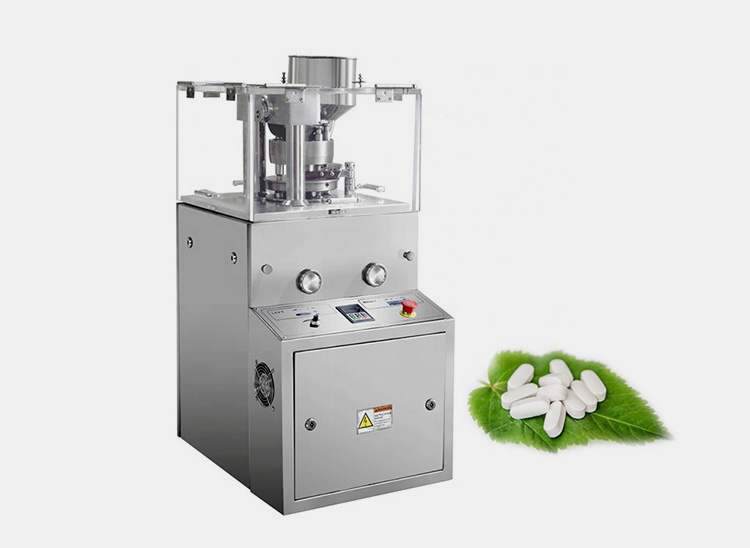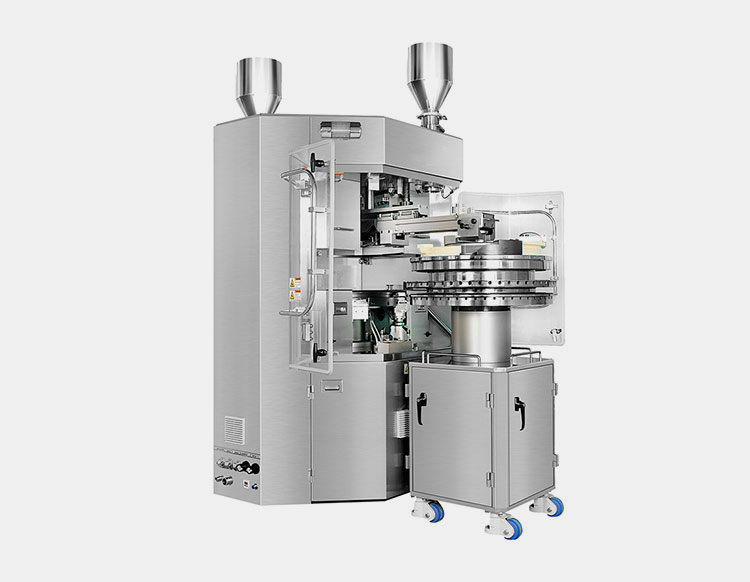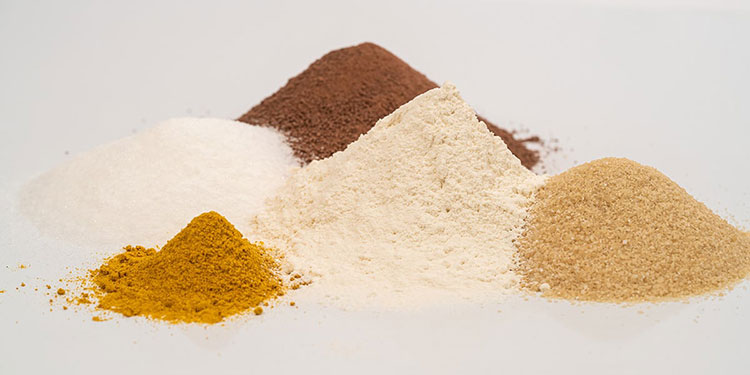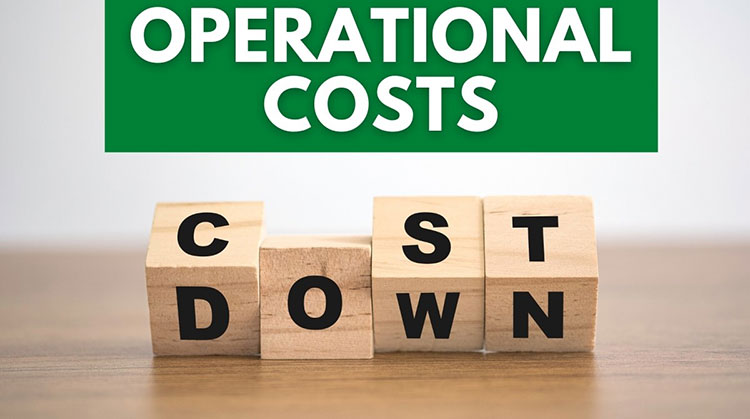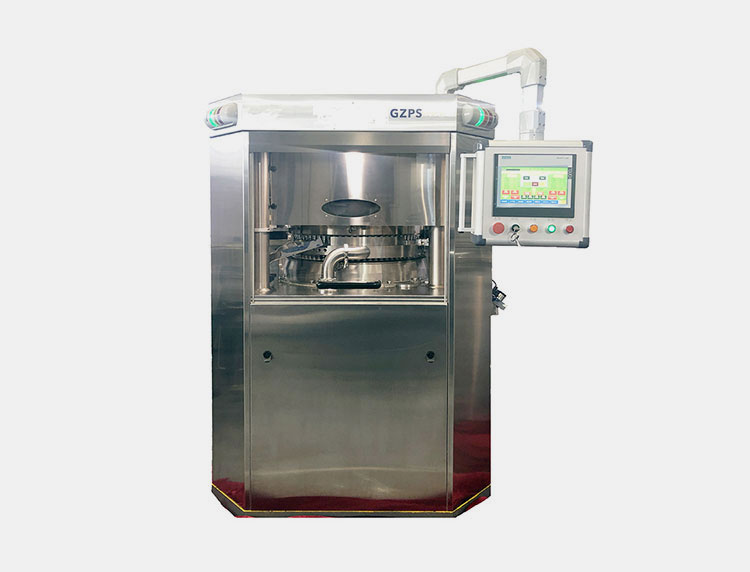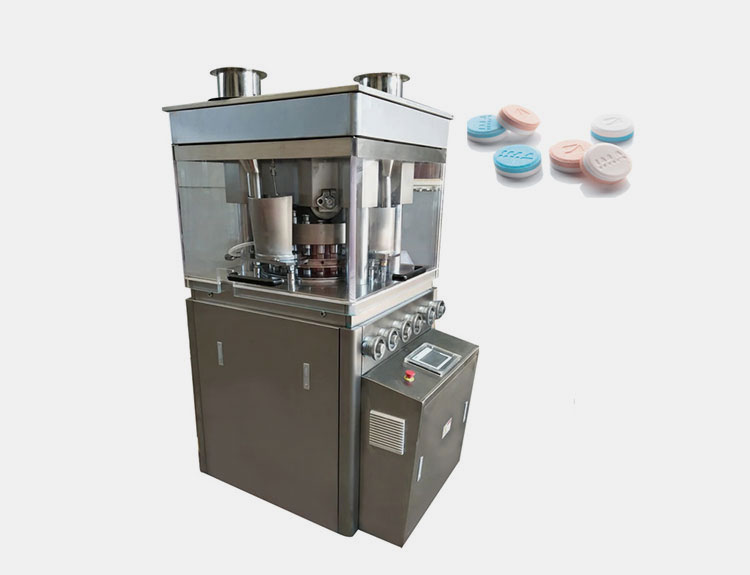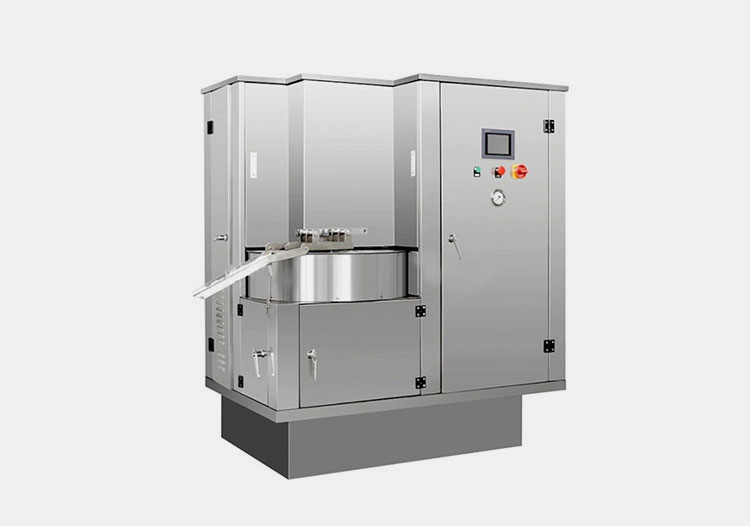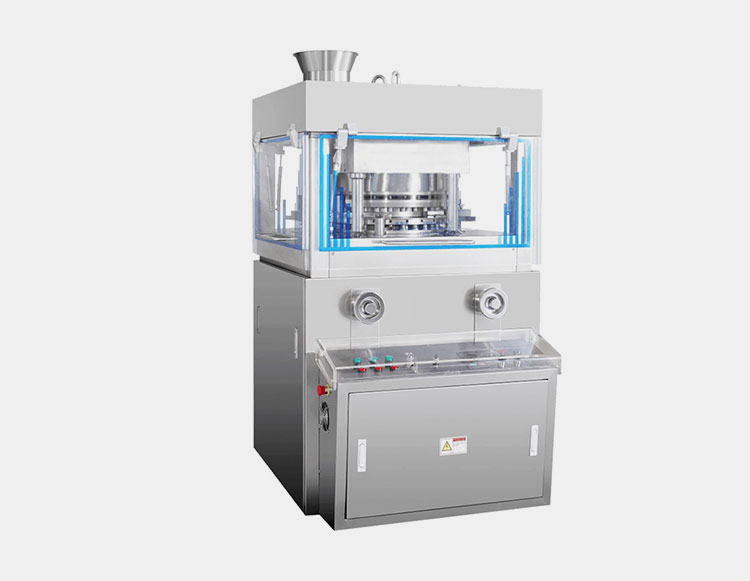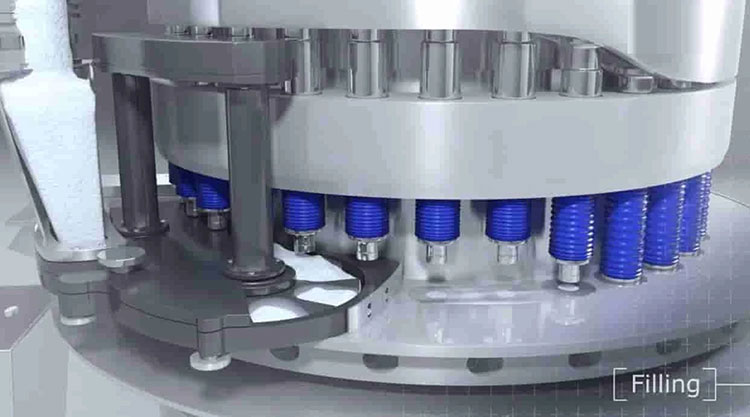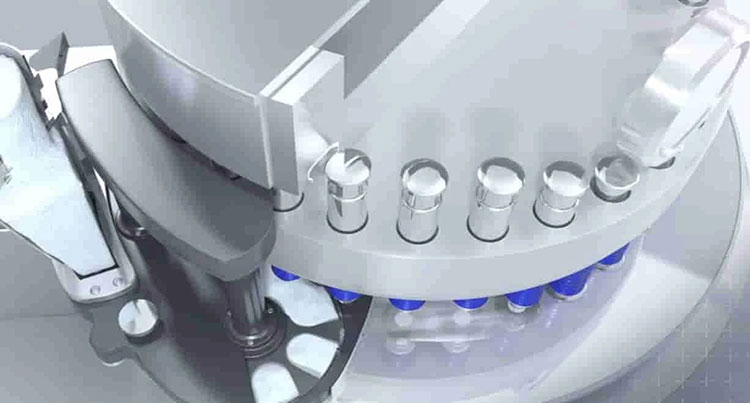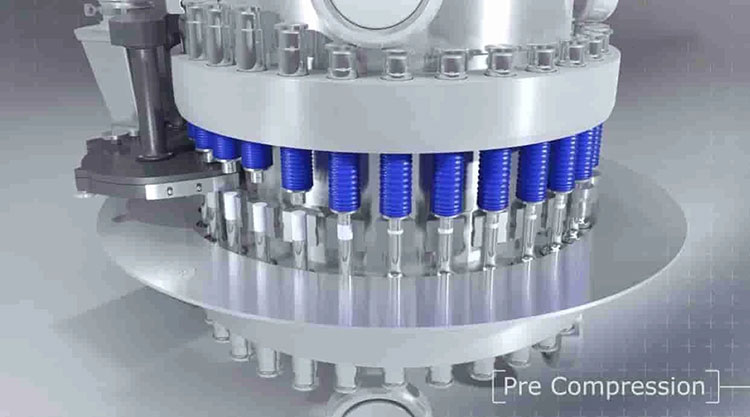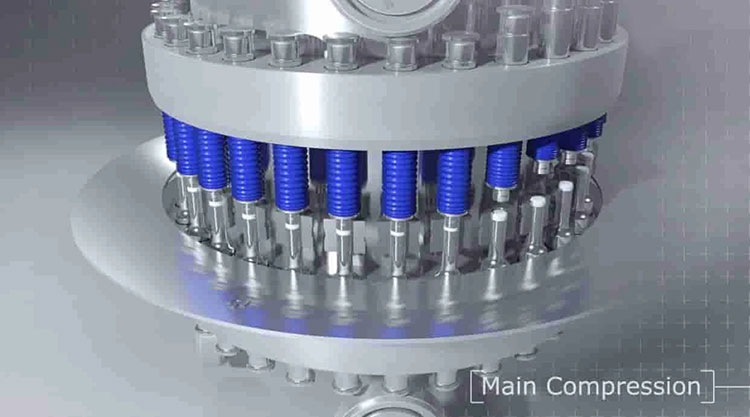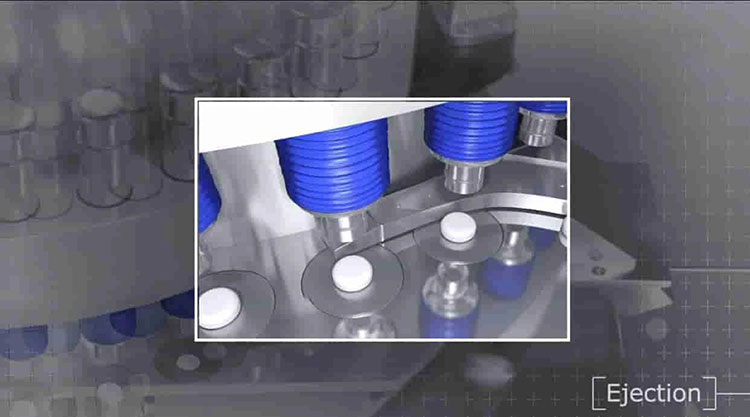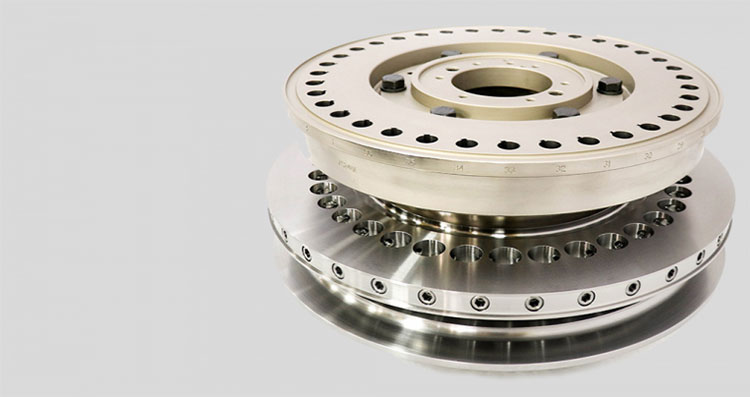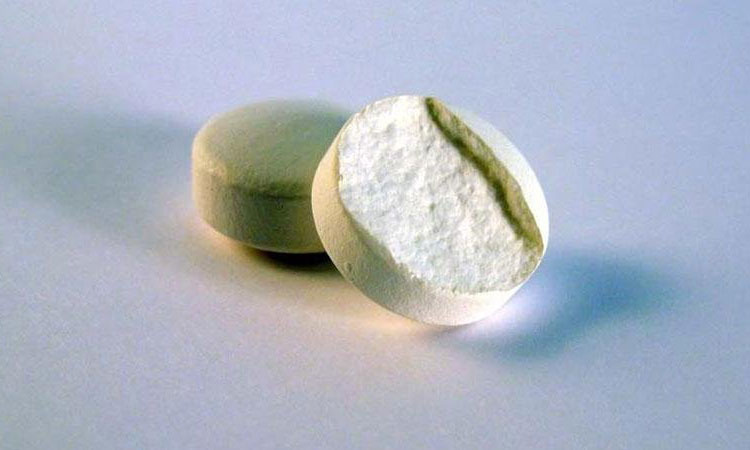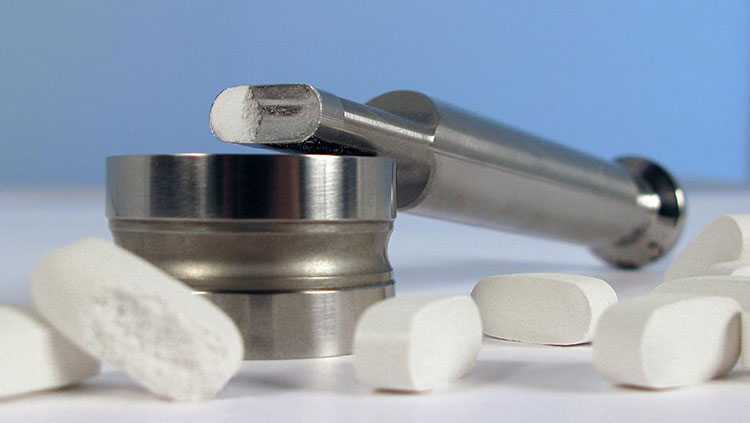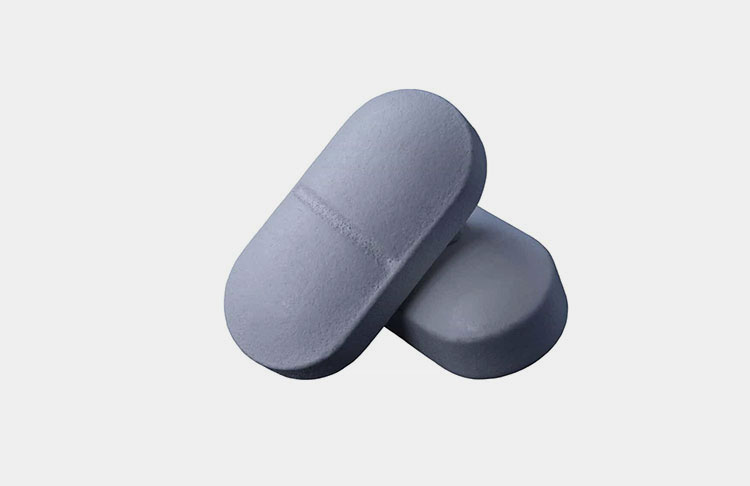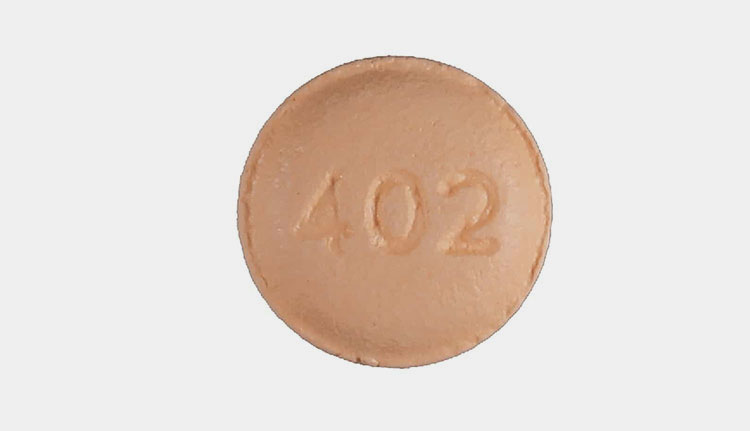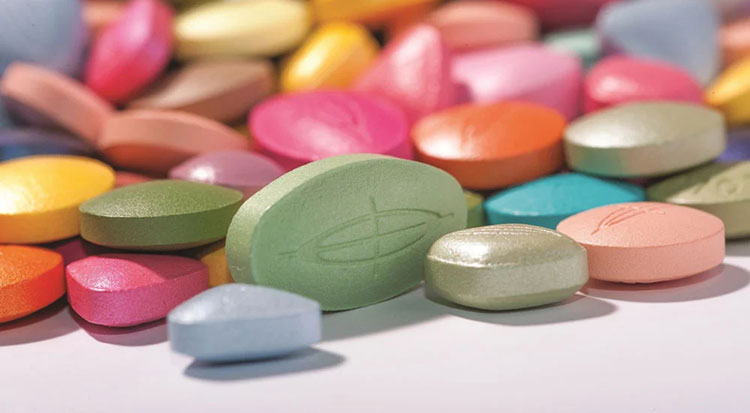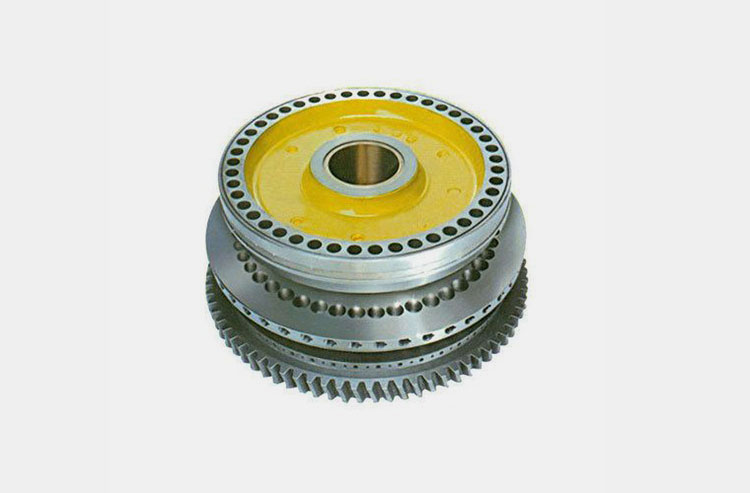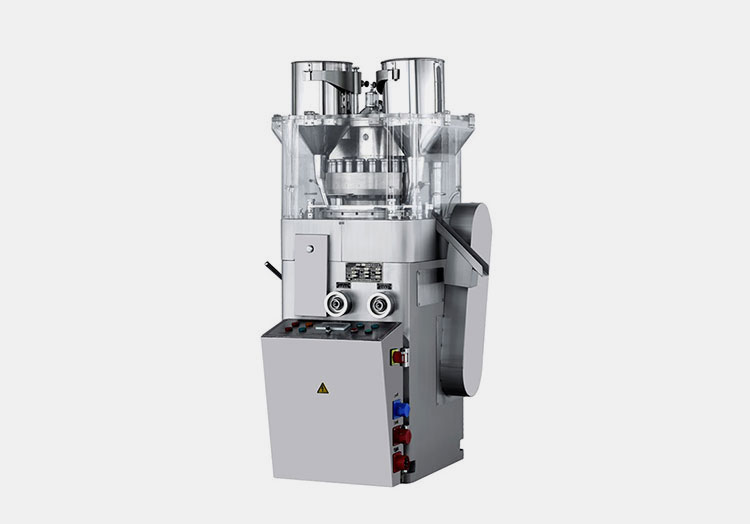Automatic Tablet Press Machine: The Complete Buying Guide In 2025
Have you ever wondered how tablets of different sizes and shapes are formed? How all the tablets in a package are of uniform size and weight? Are you searching for an ultimate solution to maximize the tablet manufacturing output? Or do you want to better understand automatic tablet press machines? Then you're at the right place.
Picture Courtesy: Stoelzle
Tablet is the most popular dosage form used in the health sector. Nowadays, about two-thirds of the drugs are dispensed in solid dosage form and most of them are tablets. Based on the manufacturing motive, the tablets may be of various shapes and sizes. Automatic tablet press machine is a versatile gadget that has amazing features making it an important part of various industries, particularly the pharmaceutical industry. With technological advancements, the automatic tablet press machine has also evolved over the years.
In this detailed guide, you will get an answer to all the queries related to an automatic tablet press machine. Let’s dive deep into the topic;
1.How would you define an automatic tablet press machine?
Automatic Tablet Press Machine – Picture Courtesy: Kompass
An automatic tablet press machine is an advanced equipment utilized to transform dry powders and granules into a compact structure. Through this device, a variety of tablets with varied structures and sizes can be manufactured by optimizing the tooling of the device. The device is known to make uniform tablets on a large scale. It provides automated continuous production of tablets by compressing a granular material. It can also shape symbols or text on the tablets.
2.Which materials can be pressed into tablets using an automatic tablet press machine?
Granules & Powders – Picture Courtesy: Syntegon
Dry powders and granules are materials that can be pressed into a compact structure using an automatic tablet press machine, but not all kinds of powders or granules can be compressed.
Powders:They are fine particles of variable particle size. Certain powders can be pressed into tablets using an automatic tablet press machine. Due to variations in particle size, powders have lower flow properties.
Granules:They are larger coarse particles of uniform particle size. Due to the uniform size of granules, they have higher flow properties comparatively. For tablet preparation, certain powders are transformed into granules to improve the flow properties and bulk density.
3.Which industries can utilize the automatic tablet press machine?
The common industries that utilize the automatic tablet press machine include; pharmaceuticals, chemicals, nutraceuticals, and the food industry. These machines offer flexibility, uniformity, and consistency in tablet manufacturing, making them an important part of numerous manufacturing processes.
PHARMACEUTICAL INDUSTRY:
Automatic Tablet Press Machine in the Pharmaceutical Industry – Picture Courtesy: Pharma Excipients
The pharmaceutical industry uses the automatic tablet press machine for the production of tablets carrying active elements in bulk batches. The machine can manufacture precise dosage tablets in a consistently efficient manner. Similarly, multi-layered tablets can also be produced using these machines.
NUTRACEUTICAL INDUSTRY:
Automatic Tablet Press Machine in the Nutraceutical Industry
In the nutraceuticals industry, the automatic tablet press machine is employed to create health supplements comprising a blend of ingredients including minerals, vitamins, and herbal extracts, in the form of tablets. These tablets can be consumed by the patients conveniently.
FOOD INDUSTRY:
Automatic Tablet Press Machine in the Food Industry
The utilization of the automatic tablet press machine in the food industry is to obtain numerous kinds of compact food products like mints, candies, beans, and snacks.
CHEMICAL INDUSTRY:
Automatic Tablet Press Machine in the Chemical Industry
Chemicals such as pesticides, cleansing agents such as chlorine and phenyl, and fertilizers are obtained in various shapes and sizes tablets with the help of an automatic tablet press machine.
4.How installing an automatic tablet press machine in the industry can benefit us?
Automatic tablet press machine offers a variety of key benefits that make them essential to many industries that require accuracy in uniformity and precise dosing, particularly the pharmaceuticals industry. Some of the vital benefits are:
Increased Operational Efficiency:
Increased Efficiency and Productivity
The automatic tablet press machine offers a rapid, continuous, and automated production rate, enhancing production efficiency and output. Tablets are produced at a much faster rate by operating these machines compared to other manual methods. Moreover, they are consistent in handling large volumes of powder materials.
Dosing Consistency and Precision:
Precise Dosing – Picture Courtesy: Frontiers Research
The automatic tablet press machine plays a crucial role in providing the precise dosing of active constituents in tablets with unmatched consistency. It ensures that every tablet has the right quantity of content by providing cutting-edge technology like fill-depth optimization and automatic weight management.
Dosage precision is crucial in the pharmaceutical industry, where slight inaccuracy in the dosing can have a significant adverse impact on the consumer’s health.
Lowered Operational and Overhead Expenses:
Lowered Operational Expenses – Picture Courtesy: Pallet Market
By providing automated processing, the automatic tablet press machine minimizes production costs and labor expenses, which means only a limited number of personnel are required for the machine's operation and fewer resources are being wasted by largely eliminating the human hand.
Tablet Uniformity:
Uniformity in Tablets – Picture Courtesy: depidiomas
Apart from other extraordinary features, the automatic tablet press machine also offers the uniformity in tablet’s size, shape, and weight. This feature is important for elegant-looking and precise dosing.
Variations in Size and Shape:
Variations in Sizes & Shapes of Tablets – Picture Courtesy: Adobe Stock
The automatic tablet press machine can produce a variety of tablets in different sizes and shapes by optimization of tooling devices. The uniqueness in shapes and sizes influences the consumers to take the tablets.
Improved Stability of Products:
Excellent Quality of Tablets – Picture Courtesy: PharmTech
The precise, uniform, and consistent manufacturing of tablets by the automatic tablet press machine improves the quality of tablets. Such tablets are less likely to degrade during their transportation and storage life.
5.Which varieties of automatic tablet press machines are available?
The automatic tablet press machine is available in several varieties and configurations, each having unique characteristics and advantages. To accommodate different production needs and parameters, these machines provide a variety of layouts and construction materials, tablet structure and size options, as well as operational speeds and efficiency.
The common forms of automatic tablet press machines are;
SINGLE-PUNCH AUTOMATIC TABLET PRESS MACHINE
Allpack Single-Punch Automatic Tablet Press Machine
This is the simplest form of automatic tablet press machine. Its simple configuration and operation make it an ideal choice for tablet manufacturing, particularly for small-volume manufacturing as they have a limited capacity of production.
They are economical for small enterprises and are easy to operate by using a pair of dies and a punch to press the granular powder into the tablet. To get distinct forms of tablets, you have to change the punch and die set.
They work by employing a set of dies and a punch. The material flows through the hopper and fills the die. The punch exerts the necessary pressure and the powder gets pressed into the tablet, followed by the die opening for ejecting the tablet.
ROTARY AUTOMATIC TABLET PRESS MACHINE
AIPAK Rotary Automatic Tablet Press Machine
Rotary tablet press machines come in several varieties. Both basic and modified forms of variants are available. The key distinguishing features between the two variants are the degree of automation and the processing speed of compression.
Because of their rapid speed and consistent outcomes, these machines are widely employed across industries. They can handle and produce millions of tablets every hour with precise control over tablet quality. They are handy to use in large-scale business models.
The capacity of some of the variants can be enhanced by connecting certain auxiliary pieces of equipment with the device, such as a vacuum powder loader or a de-duster. The only complication with this type of machine is that it requires more maintenance, good airing, and an uninterrupted power supply.
HIGH-SPEED ROTARY AUTOMATIC TABLET PRESS MACHINE
AIPAK High-Speed Rotary Automatic Tablet Press Machine
The industries operating at a large scale are leaning towards the high-speed rotary tablet press machine. These machines can provide a pre-compression pressure of 10 kN. These machines are originated to satisfy the demands of large manufacturers.
The machines can retain the ingredients recipe and reproduce them in subsequent batches. They are structured with a high-pressure tooling and have a long time of compression. Additionally, a side guard interlock device is installed to maximum protection.
THREE-COLORED AUTOMATIC TABLET PRESS MACHINE:
AllPack Three-Colored Automatic Tablet Press Machine
The three-colored automatic tablet press machine is another form of equipment employed in industries to manufacture multi-layer multi-colored tablets by compressing the granules into various forms of tablets, as per the consumer’s demands. Apart from pharmaceutical industries, it can also be utilized in the food and chemicals industry. It has an automatic operational mode and is easy to clean.
COMPRESSED AUTOMATIC TABLET PRESS MACHINE:
AllPack Compressed Automatic Tablet Press Machine
It is a type of rotary tablet press machine that is commonly used in the food industry for making biscuits by compressing the biscuit powders. The compressed biscuits are formed by the application of huge pressure by the punches on the biscuit powders.
EFFERVESCENT AUTOMATIC TABLET PRESS MACHINE:
AllPack Effervescent Automatic Tablet Press Machine
It is the modern form of rotary machine developed to fabricate effervescent and aromatic tablets. It has an automated mode of operation and has a wide scope across industries, including chemicals and the food industry. The tablets produced are usually large. The machine is typically connected to a dust collector to keep the environment clean.
6.What are the fundamental components/parts of an automatic tablet press machine?
The fundamental parts of an automatic tablet press machine are described below;
Parts of AllPack Automatic Tablet Press Machine
Hopper
It is an enclosed space on top of the machine that is utilized for feeding the material to the machine. It can house a specified volume of the feed and maintain its steady supply. To maximize the production output, some of the machine variants have more than one hopper installed in it.
Feeding System
This system plays a vital role in the transfer of powder into the die pockets. Depending on the machine model, they operate on different mechanisms. The 2 key mechanisms involved are;
Forced Feeding
The advanced form of automatic tablet press machine employs forced feeders for the material delivery into the machine. These feeders are composed of paddle wheels exerting additional force maintaining the regulated flow of materials. It aids in improving the poor flow characteristics of the material.
Gravity Feeding
The gravity feeders have a multi-chamber frame and aid in leading the material into the die pockets using the force of gravity.
Dosing Plow
It influences the regulation of precise loading of the material to the die pockets.
Turret
The turret is referred to as the heart of the automatic tablet press machine. It has uniformly spaced holes that serve as a holder for the punches and dies throughout the operation.
Ejection Cam
It is involved in the dislodgement of the finished tablets by uplifting the bottom punches.
Punches
Punches are the integral components of the machine. They are customized sets of tools originated with specified heads to fulfill the requirement of a particular size, structure, or imprint on tablets. They occur in pairs, i.e. upper and lower punch, and work in coordination to provide the necessary pressure for compression.
Screen Panel
The modern type of automatic tablet press machine comes with a touch screen panel, e.g. High-speed rotary tablet press. The different parameters can be adjusted and controlled using the touch screen. Moreover, it can also retain the recipe settings for reproducing the subsequent tablet batches.
Compression Rollers
They are cylindrical structures and are divided into 2 groups.
Pre-Compression Rollers
These rollers are employed to apply moderate force before the primary compression initiates. This action eliminates the presence of any air gaps within the raw materials.
Primary Compression Rollers
These rollers exert huge pressure on the material within the die pockets ensuring the proper compression of materials.
Dies
They are the structures consisting of holders for the punches. These holders are known as die cavities where the materials get compressed by the repeated action of the punches. They are designed to endure strong pressure.
Main Drive System
It is among the cardinal components of the rotary tablet press machine. The system supplies electricity and is liable for managing the machine’s motion. A gearbox, a primary driving shaft, an electric motor, and a series of belts/gears make up the system. A well-ordered main drive system can reliably sustain both the machine's overall execution and the fabrication of tablets.
7.What are the operating protocols of the automatic tablet press machine?
The overall working of different machine variants may vary due to their differently designed components. However, the basic operation remains the same.
The automatic tablet press machine operates in the following 4 steps;
Filling
Picture Courtesy: I Holland
In this step, the powder is introduced to the hopper which directs the powder simultaneously to the various dies by using free paddles, which help in the uniform distribution of the material to each die and halt the uneven distribution.
During the procedure, the bottom punches are guided downward by the pull-down cam to provide space for the incoming powder. The upper cam concurrently raises the upper punches.
Metering
Picture Courtesy: I Holland
This is the second and most important step of the compression process. This step involves the removal of powder in excess from the turret and measuring and controlling the right powder quantity. The process makes sure that the dosing is accurate, which is critical for the maintenance of tablet uniformity.
Compression
Once the metering stage is over, the compression phase starts. This stage is further classified into two phases.
Pre-compression Phase
Picture Courtesy: I Holland
During pre-compression, the upper punch lowers and the material within the die pocket is subjected to a modest amount of pressure. The main aim of this phase is the formation of a packed mass called a slug. The slug serves as a base for the primary compression phase and helps remove any air gaps from the powder.
Main Compression Phase
Picture Courtesy: I Holland
During this phase, the upper punch exerts a huge pressure on the slug, resulting in the further compaction of the material which then turns into the final shape of the tablet.
The force used in the primary compression process guarantees the right bulk, diameter, and stiffness of the tablet. The tablet attributes can be managed by varying the dwell time, which is the contact time of the punches with the powder material.
Ejection
Picture Courtesy: I Holland
After the compression process completes, the bottom punches will lift and push the formed tablets out from the die pocket. The automatic tablet press machine employs lubricants to smoothly remove the tablet from the die. This lessens the chance of damaging or jamming the tablet during ejection. In addition, some sophisticated tablet press machines have a reject mechanism built in to separate the faulty tablets at this stage.
8.How does a rotary tablet press machine differ from a single-punch tablet press machine?
| SINGLE-PUNCH AUTOMATIC TABLET PRESS MACHINE | ROTARY AUTOMATIC TABLET PRESS MACHINE |
 |
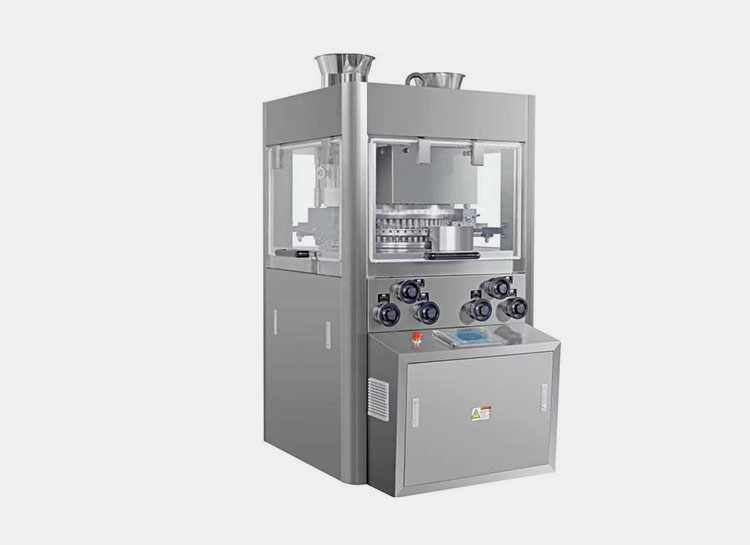 |
| It has a simple design | It has a complex design |
| Utilizes a single set of tooling | Contains multiple tooling, which rotates on a turret |
| The bottom punch remains stationary | Both punches move between pressing rolls |
| Employed for small-scale operation | Large-scale operation where production demand is high |
| Easy to operate | Required trained personnel to operate |
| Low noise production | High noise production |
| Maintenance is easy | Maintenance is difficult |
| Limited manufacturing capacity | Maximum manufacturing capacity |
| Less control over tablet properties | Precise control over tablet qualit |
9.How would you describe a turret in an automatic tablet press machine?
TURRET:
Turret in Pill Pressing Machine- Picture Courtesy: Elizabeth Companies
The turret is the main processing component of the automatic tablet press machine, sometimes referred to as the heart of the machine. The rotating turret is composed of holes that serve as the holders for dies and punches. The holes in the turret are evenly spaced to ensure the proper alignment of the tools, which results in efficient operation.
There is a range of turrets available for various tools of the automatic tablet press machine. It is easy to make the turret adaptable according to the tools by simply changing its base. The turrets are made of high-quality steel to endure the huge pressure during the operation. The number of holes in the turret determines the production capacity of the machine.
The maximum rotating speed of a turret can be up to 70 RPM, depending upon the model of the machine.
The turret can be categorized into 3 main sections;
Die Turret: the segment that serves the purpose of holding the dies.
Upper Turret: the segment involves in holding of the upper punches.
Lower Turret: the segment that involves in holding of the bottom punches.
10.What do you mean by tablet tooling?
TABLET TOOLING
Tooling of Automatic Tablet Press Machine
Tablet tooling refers to the vital components of the automatic tablet press machine, i.e. the dies and the punches. The versatility in tooling is one of the tremendous features of the automatic tablet press machine. There is a huge significance of tooling as it allows users to fabricate various forms of tablets as per the consumer’s demands.
The tooling comes in a variety of shapes and sizes, designed for the manufacturing of specific forms of tablets. The most common are round, oval, diamond, and oblong. Similarly, some tools have symbols and shapes for imprinting on tablets. Moreover, the depth of the die pockets also results in variations in the tablet’s thickness.
Certain manufacturing units imprint their industrial brand symbol on the tablets to avoid counterfeiting, which is only possible because of the tooling’s versatility.
11.What problems can you face using an automatic tablet press machine and what are the solutions to those problems?
One may face certain problems while using an automatic tablet press machine and to resolve those problems, you must know about the cause of the problem. These problems may be either because of any technical issue in the machine or due to any formulation errors. Some common problems and their solutions are discussed here;
LAMINATION
It is defined as the splitting of tablets into multiple layers.
Tablet Lamination – Picture Courtesy: Scientist Live
| REASONS | RECTIFICATIONS |
| It may be caused by the over-compression of granular material, resulting in granular flattening, which then does not lock together.
The issue may arise due to misalignment of certain machine components such as the incorrect setting of the take-off plate or bottom punch ejection, utilization of worn punches, granules being over-dried, or under-usage of binders. |
Increase the moisture and binder level in the formulation.
Reset the take-off plate and the bottom punches. Replace or repair the damaged punches. |
CAPPING
It is the partial or complete separation of the lower or upper layer from the tablet’s main body.
Tablet Capping – Picture Courtesy: Freeman Technology
| REASONS | RECTIFICATIONS |
| It is mainly caused due to the entrapment of air, which may occur due to compression being too quick.
The other reasons might be pressure being too high, over-blending, or not enough binder within the formulation. |
Reduce the compression speed.
Minimize the fines in granules. Adjust binder and moisture ratio. Lower the weight or increase the thickness within limits. Use of properly designed tooling that allows the air to evacuate during the process. |
STICKING & PICKING
Sticking refers to the attachment of powder to the punch faces or die walls.
A more specific term is picking, which is the powder sticking within the logos, letters, or shapes on the punches.
Tablet Sticking
Tablet Picking – Picture Courtesy: Science Direct
| REASONS | RECTIFICATIONS |
| It may be caused because of;
Damaged punches. Ringed die. Letters or logos are to be very small. Too much moisture. Inadequate lubricant. Insufficient compaction force. |
Replace or polish the dies and punches.
Adjust lubricants. Enhance the compaction force. Increase the letter diameter or tablet’s size. Dry the material. |
WEIGHT VARIATION
It means the irregularity in the weight of the tablets.
Weight Variation in Tablets – Picture Courtesy: IPharmachine
| REASONS | RECTIFICATIONS |
| It may be caused because of;
Length variation in punches. Inconsistency in feeding. Inappropriate feeder setting. Inconsistency in granular size. Poor flow of the powder. Presence of dirt on weight adjustment cam. |
Ensure the punches are tightened.
Clean the weight adjustment cam. Set the feeder properly. Add lubricant. Lower the speed of the machine. Introduce a vibration mechanism in the hopper to maintain the steady feed. |
DOUBLE IMPRESSION
The imprinting on both sides of the tablet. This problem arises only with the use of punches with monograms.
Double Impression on Tablets – Picture Courtesy: IPharmachine
| REASONS | RECTIFICATIONS |
| It may be caused because of;
Misalignment of the punches. Over-compression. Utilization of damaged punches or dies. |
Replace or polish the dies and punches.
Reduce the compression force. Set the punches properly. |
12.What measures can be taken for the maintenance of the automatic tablet press machine?
Waiting for the breakdown of your industrial automatic tablet press machine can be costly. Industrial managers should create preventive maintenance programs/schedules rather than waiting for unforeseen incidents to happen, that might stop or minimize the output.
When the machine catches a problem, it gives various signs of malfunctioning, they can be visible or audible. The working personnel should look up for or listen to those signs. Every component should be regularly inspected and maintained as per set guidelines. The maintenance can be done on a daily, weekly, as well as monthly basis.
The common maintenance procedure includes;
Dusting & Cleaning
This is an important step to be followed regularly. As the automatic tablet press machine works on the principle of automated production, its cleaning and dusting are necessary for efficient operation.
The components like hoppers, pressing rolls, punches, dies, and feeding systems require extensive dusting and cleaning.
It ensures that the components don’t have any powder sticking onto the surface, which can cause problems in the quality of tablets. The device typically utilized for this purpose is an ultrasonic automated cleaner.
Lubrication
This needs to be done to maintain the fluency of different moving parts of the machine such as rollers, punches, and turret. Continuous operation of the machine can reduce the moving speed of such parts.
Assessment
A visual inspection of the machine tools should be done under magnifiers. It is important to look for any damages, corrosion, or wear. The cleaning validation is also done through assessment. It helps in providing early clues about any problem with the machine.
Examining various parts is crucial in maintaining optimal operation, particularly the turret, being the heart of the machine, and should be assessed regularly to reduce runout.
Repairing
Any damaged or worn tool should be repaired or replaced quickly to prevent a drop in the tablet’s quality. The repairing should be done by a trained worker.
Measuring
It is essential when repairing is done to ensure that the tools are in proper shape and dimensions. It should be carried out regularly even if repair has not been done. Proper tooling dimensions are important to regulate the tablet’s characteristics.
Polishing
Tooling life can also be maximized by proper and controlled polishing. It is done to give a smooth finish to the components.
13.What parameters should be considered while selecting an automatic tablet press machine?
If you are seeking guidance on selecting the appropriate automatic tablet press machine, here are some key considerations to keep in mind.
MANUFACTURING CAPACITY:
Manufacturing Capacity
It is one of the most crucial aspects to consider when opting for an automatic tablet press machine. The manufacturing capacity is described as the tablet’s quantity that a machine can produce in one hour. One should keep in mind their present requirements as well as future objectives.
TABLET CHARACTERISTICS
Variety of Shapes & Sizes of Tablets – Picture Courtesy: The Medicine Maker
Different variants of the automatic tablet press machine have the specific capability of fabricating various forms of tablets. Therefore, always select the variant that satisfies your requirements.
EFFICIENCY
Picture Courtesy: REVE Chat
The efficiency of a machine is also an important factor to consider. An efficient machine working at a high speed without sufficient breakdown will help you achieve the production demands.
TURRET
Turret
Always check for the turrets in a machine that should be operating smoothly and must be aligned with tooling. As this component is important in determining the machine’s efficiency, it is necessary to observe the turret properly.
CONSTRUCTION MATERIAL
AIPAK Rotary Automatic Tablet Press Machine – Stainless Steel
Always opt for a machine that is made of high-quality material to ensure the manufacturing process is efficient and the powder does not stick to the surface of various components or gets stuck, reducing the capacity of production and loss of resources.
Conclusion
A quick and easy approach to getting several nutrients or drugs in the least amount of time is by taking them in the form of tablets. Now, to produce such tablets with accuracy, an automatic tablet press machine is required. There is a diverse range of applications to offer by the automatic tablet press machine in various industries. Many industries have the propensity for this machine due to its high power and efficient production rate. So, if you're planning to purchase; then contact Allpack Team Now to find more about automatic tablet press machine series.
Don't forget to share this post!
CONTACT US
Tell us your raw material and project budget to get quotations within 24 hours.
WhatsApp Us: +86 181 7101 8586
The Buyer's Guide
